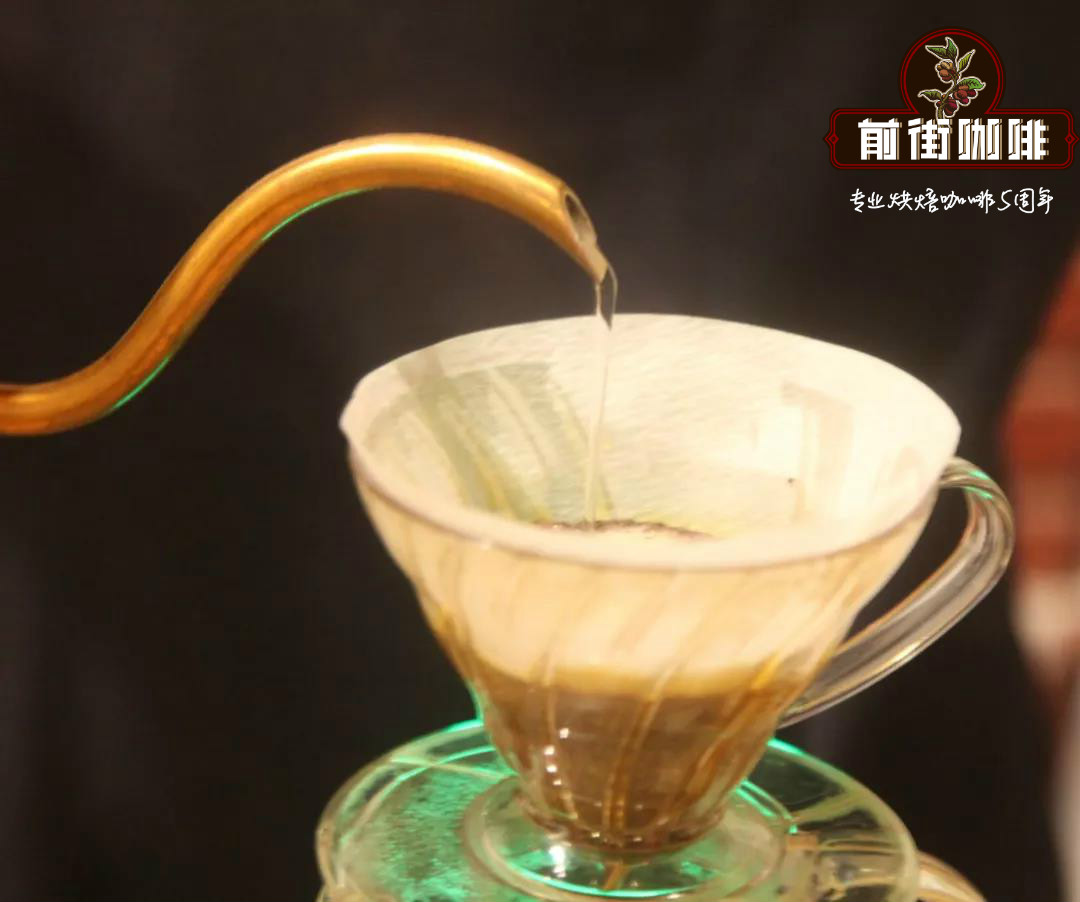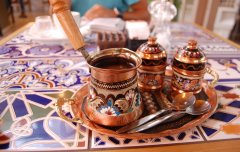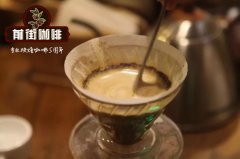Hand brewing coffee originated from the development of hand brewing utensils. Beginners learn the skills of hand brewing coffee.

Professional coffee knowledge exchange more coffee bean information please follow the coffee workshop (Wechat official account cafe_style)
Briefly explain the process of hand brewing coffee from coffee beans to a cup of coffee. Coffee beans are the seeds of coffee fruit. Raw beans must first be processed and roasted into ripe beans in the hands of the baker. Then, the beans are grinded into a bean grinder to make a uniform coffee powder. Ground into powder in brewing, water can easily screen out good coffee aroma components!
The filter paper is put into the filter cup, poured into the coffee powder and brewed with hot water, which is a relatively recent method of extraction. In 1908, German housewife Melitta Bentz,1873~1950 was the first to apply for the patent of filter paper and filter cup, which has been popular ever since. Before this, most Europeans used linen, flannelette bags, or metal mesh to filter coffee grounds, but there were many disadvantages. Although the filter cloth can remove coffee grounds, it will stink if you wash it every time you use it. As for the boiling pot (similar to today's mocha pot), the metal mesh is relatively large, so it is not easy to filter out the fine residue, and it is easy to drink into the scorched residue. Every day, in order to make a clean, residue-free and non-bitter coffee, Melita began to experiment with a new method of filtering dregs.
She tried several filter materials and found that the blotting paper used in her son's homework book was the most effective. at first, she cut the blotting paper into a round shape and spread it on a copper pot with a small hole in the bottom, becoming a virgin version of the "filter cup." the ink-absorbing paper is light and thin, and the function of the filter residue is excellent. It is very convenient to throw it away after use, and more importantly, the coffee is clean, sweet and less bitter.
After several improvements, Merita filter paper and ceramic filter cups were patented in Germany in 1908 and sold very well in Europe, and the world finally drank clean and residue-free filter coffee. Melita has become the godmother of fan-shaped filter paper and filter cups. German Melita three-hole and four-hole filter cups are popular so far.
In addition, after German chemist Peter J.Schlumbohm 1896-1962 immigrated to the United States, he was inspired by the beaker in the laboratory. In 1941, he launched the follicular pot Chemex, which is a combination of filter cup and bottom pot, which is made of heat-resistant glass. The filter paper used is also about 20% and 30% thicker than ordinary filter paper, which is the most important feature and has been popular in Europe and the United States for more than half a century. It can be seen that in Europe and the United States in the middle of the 20th century, hot water hand coffee, filter paper extraction method has been popular.
In the United States, after 1960, an electric drip filter, commonly known as the American coffee machine, was invented. Filter paper was added to the filter to remove dregs, gradually replacing the more troublesome hand-washed and scorched mocha pots. The electric drip filter pot is easy to use, efficient and clean. It is still the most popular household coffee machine in the world. It is also inspired by hand coffee, filter paper and filter cups.
Important Notice :
前街咖啡 FrontStreet Coffee has moved to new addredd:
FrontStreet Coffee Address: 315,Donghua East Road,GuangZhou
Tel:020 38364473
- Prev

Arabica coffee etiquette that you don't know! The host can't drink more than three cups of coffee!
Professional coffee knowledge exchange more coffee bean information please follow the coffee workshop (Wechat official account cafe_style) Coffee is a popular drink all over the world, but do you know? Coffee drinking actually originated in the Arab region and spread to Europe in the 17th century. Even when it was first introduced into Europe, it got the title of The Wine of Islam. The origin of coffee today
- Next

The influence of hand-brewing techniques on the Flavor of hand-brewed Coffee basic knowledge of how to make good coffee
Professional coffee knowledge exchange more coffee bean information please follow the coffee workshop (Wechat official account cafe_style)
Related
- Beginners will see the "Coffee pull flower" guide!
- What is the difference between ice blog purified milk and ordinary milk coffee?
- Why is the Philippines the largest producer of crops in Liberia?
- For coffee extraction, should the fine powder be retained?
- How does extracted espresso fill pressed powder? How much strength does it take to press the powder?
- How to make jasmine cold extract coffee? Is the jasmine + latte good?
- Will this little toy really make the coffee taste better? How does Lily Drip affect coffee extraction?
- Will the action of slapping the filter cup also affect coffee extraction?
- What's the difference between powder-to-water ratio and powder-to-liquid ratio?
- What is the Ethiopian local species? What does it have to do with Heirloom native species?

